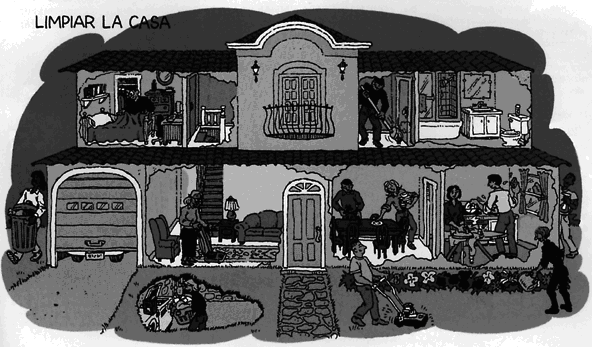Studies show conclusively that if large groups of children watch a great deal of televised violence, they will be more prone to behave aggressively. In other words, not all children will become more aggressive, but many will. Especially during adolescence, viewing lots of violence on television is associated with actual increases in aggression against others. It's little wonder that a large panel
of medical and psychological experts recently concluded that media violence is a serious threat to public health. It is fair to say, then, that televised violence causes aggression in viewers, especially children? Fortunately, that would be an exaggeration. Televised violence can make aggression more likely, but it does not invariably "cause" it to occur for any given child. Many other factors affect the chances that hostile thoughts will be turned into actions. Among children, one such factor is the extent to which a child identifies with aggressive characters. That's why it is so sad to find TV heroes behaving aggressively, as well as villains. A case in point is the popular Power Rangers TV programs for children. In each episode, the Power Rangers "morph" into superheroes who use karate and other violent actions to conquer monsters. After watching an episode of the Power Rangers, a group of 7-year-old children committed seven times more aggressive acts than a control group that didn't watch. The aggressive children hit, kicked, and karate-chopped their peers, often directly imitating the Power Rangers. Younger children, in particular, are more likely to be influenced by such programs because they don't fully recognize that the characters and stories are fantasies. Youngsters who believe that aggression is an acceptable way to solve problems, who believe that TV violence is realistic, and who identify with TV characters are more likely to copy televised aggression. In view of such findings, it is understandable that Canada, Norway, and Switzerland have restricted the amount of permissible violence on television. Should all countries do the same? The main idea of this passage is that
a. superheroes on children's programs are becoming more violent.
b. all children who watch violent programs eventually become violent.
c. aggressive behavior is normal among children.
d. media violence is a serious threat to society, especially to children.
D
You might also like to view...
Which sentence has all words correctly capitalized?
a. Janelle works at the pinkerton mall on fifth avenue. b. janelle works at the pinkerton mall on fifth avenue. c. janelle works at the Pinkerton mall on Fifth Avenue. d. Janelle works at the Pinkerton Mall on Fifth Avenue.
A stop sign, a wedding dress, and a handshake are examples of
a. values. b. culture. c. symbols. d. language. e. norms.
En mi casa. You are showing your friend Elvira a photo of your house and some of your family members. Identify four rooms, four pieces of furniture, and two chores, by writing their names on the lines below.

What will be an ideal response?
A LEER: El mal de Chagas.Diana, Martina's sister, is doing some research about the problems that affect Latin America. She has come across an article about an endemic illness. Read the article and then choose the option that best completes the sentences.?
? El mal de Chagas, la enfermedad de los pobres El mal de Chagas es una enfermedad muy grave (y a menudo mortal) que afecta a unos diez millones de personas en todo el mundo, especialmente en Latinoamérica. De esos diez millones, tres sufren la enfermedad de manera crónica y severa. El mal de Chagas suele transmitirse por medio de la vinchuca, un insecto que habitualmente se aloja en viviendas precarias de las zonas rurales y suburbanas de las regiones de clima seco y cálido. En 2012, la Organización Panamericana de la Salud certificó oficialmente a Uruguay como el único país latinoamericano libre de vinchucas. Este enorme logro fue posible gracias a un plan integral que incluía: la construcción de viviendas de calidad en reemplazo de las precarias,las fumigaciones constantes,-varias campañas de concientización en los principales medios de comunicacióny el esfuerzo de los maestros rurales por educar a los niños sobre la importancia de erradicar el insecto transmisor de sus viviendas.Uruguay ha demostrado que es posible evitar la transmisión del mal de Chagas. En el resto de la región, siguen los esfuerzos por controlar una enfermedad que cada año se cobra la vida de hasta 50.000 personas. Esta enfermedad se transmite…? A. ?por el aire. B. ?por un animal. C. ?por el calor.